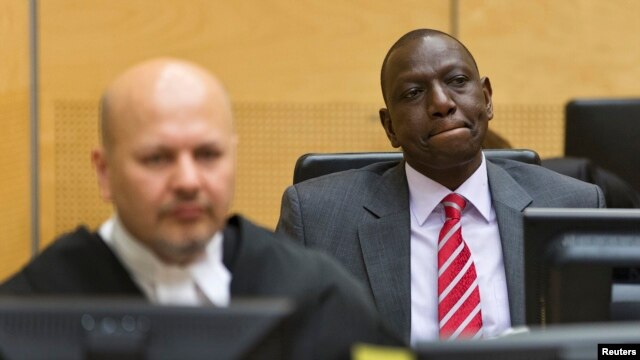By Thomas Murphy
Impunity Watch Reporter, Middle East
DAMASCUS, Syria – A team of United Nations chemical experts, led by Dr. Åke Sellström, has reported that there is “clear and convincing” evidence that sarin gas was used on a “large scale” during a 21 August incident outside of Damascus. The attack, which employed rockets equipped with sarin gas, killed many civilians including children.

United Nations Secretary General Ban Ki-moon spoke to the media after briefing the Security Council on the team’s findings. Ban referred to the report as “chilling read” and stressed the significance of attack, the first of its kind “since Saddam Hussein used [chemical weapons] in Halabja in 1988.”
“This is a war crime,” the Secretary-General said, “The international community has a responsibility to hold the perpetrators accountable and to ensure that chemical weapons never re-emerge as an instrument of warfare.”
The purpose of the report was strictly to determine whether a chemical weapons attack occurred, not to assign blame for the attack. Ban told reporters that whether responsibility for the attack is determined is “for others to decide”, but stressed that whoever was responsible should be brought to justice.
The inspectors interviewed more than fifty survivors, many of whom reported suffering from telltale signs of exposure to sarin gas. Symptoms of the survivors often included difficulty breathing, eye irritation, blurred vision, nausea, vomiting, and loss of consciousness. First-responders reported suffering from similar symptoms and observed that a large number of people were either unconscious or deceased upon arrival.
In addition to personal accounts of the incident, the chemical weapons team discovered a great deal of physical evidence that supported the existence of a chemical weapons attack. Eighty-five percent of blood samples taken from survivors tested positive for sarin or sarin indicators. The majority of rocket fragments and environmental samples tested positive for sarin or sarin indicators as well.
The report concluded that the attack occurred during the “early morning hours of 21 August.” Based on weather reports during this time, the conditions were favorable for maximizing the effect of sarin gas. The temperature on the ground was falling and would have created a downward draft of air, effectively preventing the gas from dispersing upwards, and therefore increasing exposure.
“The downward movement of air would have allowed the gas to easily penetrate the basements and lower levels of buildings and other structures where many people were seeking shelter,” Ban said, referring to the report.
The opposition and the Assad regime continue to blame each other for the attack. Certain details, including the high quality of sarin gas and the advanced rockets used, point to the Assad regime. However, Assad maintains the rebels are responsible in an effort to encourage Western military involvement.
For further information, please see:
Al Jazeera – UN: Evidence of Syrian chemical attack ‘indisputable’ – 16 September 2013
BBC – Syria Crisis: UN report confirms sarin ‘war crime’ – 16 September 2013
NBC – UN report confirms chemical weapons use in Syria – 16 September 2013
UN News Service – ‘Clear and convincing’ evidence of chemical weapons use in Syria, UN team reports – 16 September 2013
UN – United Nations Mission to Investigate Allegations of the Use of Chemical Weapons in the Syrian Arab Republic – 13 September 2013

